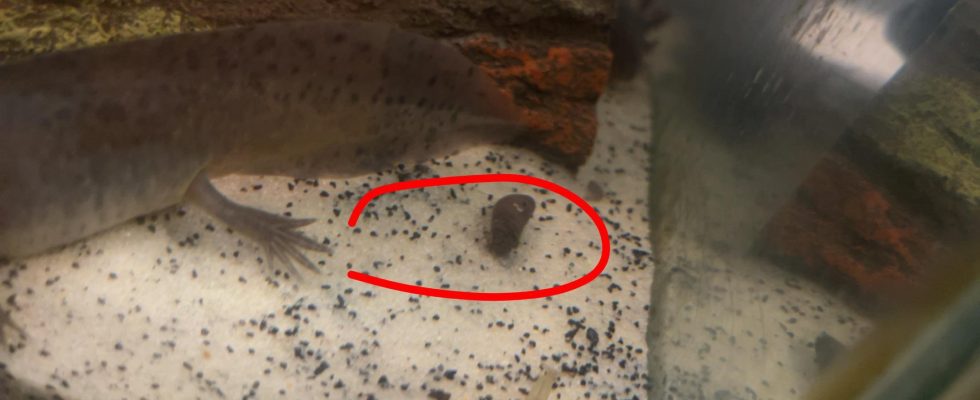Axolotl poop may not be the most glamorous topic, but for those who love these unique creatures, it’s a vital aspect of caring for them. So, what does axolotl poop look like? Well, it’s small, black, and cylindrical in shape. You may find it floating in the water or stuck to surfaces in their tank. Understanding the appearance of axolotl waste is crucial for monitoring their health and maintaining a clean environment for these fascinating amphibians. Let’s dive deeper into this intriguing subject!
What Does Axolotl Poop Look Like
Welcome to our guide on axolotl poop! If you are a proud axolotl owner or just fascinated by these unique aquatic creatures, you may have wondered about the appearance of their waste. In this article, we will dive into the intriguing world of axolotl poop and explore what it looks like. So, let’s get started!
The Basics of Axolotls
Before we delve into the specifics of axolotl poop, let’s quickly review what axolotls are. Axolotls are a type of amphibian, known for their regenerative abilities and external gills. These charming creatures are often kept as pets due to their low maintenance requirements and fascinating appearance.
Understanding Axolotl Digestive System
Like all animals, axolotls need to eat to survive. They are carnivorous creatures, meaning they primarily feed on live or frozen foods such as small fish, worms, and insect larvae. Axolotls have a relatively simple digestive system compared to mammals, consisting of a short intestine and a cloaca, which is a common opening for waste excretion and reproduction.
When an axolotl consumes food, the digestion process begins in its stomach, where the food is broken down into nutrients that the body can absorb. The waste products from this process eventually make their way through the intestines and exit the body as poop through the cloaca.
What Does Axolotl Poop Look Like?
Now, let’s get to the main question – what does axolotl poop look like? Axolotl poop is typically dark brown or black in color and has a soft, mushy consistency. It may resemble small, elongated tubes or coils, similar to the appearance of fish waste. The size of axolotl poop can vary depending on the size of the axolotl and its diet.
Since axolotls consume protein-rich foods, their poop tends to be relatively high in nitrogen and can contribute to the nutrient cycle in a tank or aquarium. Monitoring your axolotl’s poop can also provide insights into its health and diet, as any changes in color, consistency, or frequency could indicate underlying issues.
Factors Influencing Axolotl Poop
Several factors can influence the appearance of axolotl poop. Diet plays a significant role, as different types of food can affect the color and texture of the waste. For example, feeding your axolotl foods with artificial colorings may result in colored poop, while a diet rich in fats may lead to greasy stools.
Water quality is another crucial factor that can impact the health of your axolotl and the appearance of its waste. Clean, well-maintained water helps prevent digestive issues and ensures that your axolotl’s waste is properly eliminated from its system.
Signs of Healthy Axolotl Poop
Healthy axolotl poop should have a consistent color and texture, indicating that the digestive system is functioning properly. It should not have a foul odor or contain undigested food particles, as these could be signs of an underlying health issue.
Regular monitoring of your axolotl’s poop is essential to ensure that it remains healthy and thriving. By observing and understanding the characteristics of axolotl poop, you can better assess your pet’s overall well-being and make any necessary adjustments to its care routine.
In conclusion, axolotl poop is a natural byproduct of their digestive process and can provide valuable insights into their health and diet. By understanding what axolotl poop looks like and the factors that influence its appearance, you can better care for your axolotl and ensure that it leads a happy and healthy life. Remember to maintain a balanced diet, clean water, and regular monitoring of your axolotl’s poop to promote its well-being. We hope this guide has shed light on the intriguing world of axolotl poop!
Do Axolotls Poop? Discovering the Digestive Habits of Axolotls
Frequently Asked Questions
What color is axolotl poop?
Axolotl poop is typically dark brown or black in color. The shade can vary depending on the axolotl’s diet and overall health. It is important for axolotl owners to monitor the color and consistency of their pet’s poop as changes may indicate underlying health issues.
How often do axolotls poop?
Axolotls generally poop a few times a day, but the frequency can vary based on factors such as feeding schedule, diet, and individual metabolism. Keeping track of your axolotl’s pooping habits can help you understand its digestive health and ensure proper care.
What size is axolotl poop?
Axolotl poop is small in size compared to their body, resembling tiny cylindrical or elongated shapes. The size and quantity of axolotl poop can be influenced by the size of the axolotl, its feeding habits, and the type of food provided. Regular cleaning of the tank is essential to maintain a healthy environment for your pet axolotl.
Final Thoughts
In conclusion, axolotl poop resembles small, dark pellets. It is often firm in consistency with a cylindrical shape. Monitoring the appearance of axolotl poop is essential for assessing their digestive health. Remember, healthy axolotl poop should be easily distinguishable within their tank environment. If you notice any drastic changes in the appearance of what does axolotl poop look like, it could indicate underlying health issues that may require attention. Prioritize regular observation and maintenance to keep your axolotl thriving.


